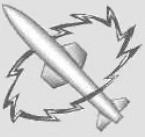herwin
Posts: 6059
Joined: 5/28/2004
From: Sunderland, UK
Status: offline

|
quote:
ORIGINAL: JWE
Ok, what you must understand is this is a computer game and it will not unfold as an irl replay.
The naval game engine shoots (applies) a data value (torp, or whatever) against a target value (durability, or tonnage, or whatever). The engine has no clue, and doesn’t care, what the nice little textual name is for the target.
In AE, we adaptively defined the ability of various ship types to resist shell/torpedo attacks depending on a host of characterics. Merchies ‘ought’ to sink after a couple torps in the belly, but they won’t always. Merchies that have been Navalized will be harder to sink.
“Most” merchant hull adaptations will be easier to sink than correspondingly similar warship designs of corresponding tonnages, but not all. Should be ok.
Upside, it’s all in tables, so if it requires tweaks, it’s simple.
Downside, it’s all in tables, so if you dork with values without knowing the algorithm, your looking at the black hole event horizon.
IRL, the primary measure of resistance to torpedo hits was water-line area, not tonnage--hull breaches effectively flooded the entire depth of the hull, so the effect was proportional to the floor area of the compartments flooded. Warhead damage was proportional to the 2/3 power of the warhead weight. WWI-era warships were about half as resistant to torpedoes as WWII. Carriers (of all nations) were about 2/3rds as resistant as gunships of the same date and waterline area. Your generic 2200-ton WWII destroyer had about a 50% chance of sinking when hit by one standard torpedo.
_____________________________
Harry Erwin "For a number to make sense in the game, someone has to calibrate it and program code. There are too many significant numbers that behave non-linearly to expect that. It's just a game. Enjoy it." herwin@btinternet.com |
 Printable Version
Printable Version













 .
.






 New Messages
New Messages No New Messages
No New Messages Hot Topic w/ New Messages
Hot Topic w/ New Messages Hot Topic w/o New Messages
Hot Topic w/o New Messages Locked w/ New Messages
Locked w/ New Messages Locked w/o New Messages
Locked w/o New Messages Post New Thread
Post New Thread